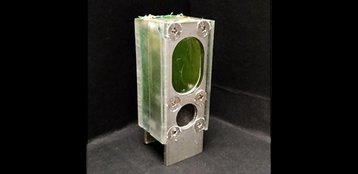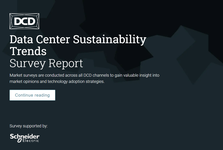Researchers have used algae to power a microprocessor for more than a year, fed only by sunlight and water.
The Cambridge University scientists ran a tiny Arm Cortex M0+ on the current produced by common blue-green algae, growing in a small tank exposed to sunlight. The tank was the size of an AA battery and researchers say the technique could replace batteries in small off-grid Internet of Things devices so they can run continuously unattended.
The experiment has run continuously for more than a year.
Pond-power?
The system sat on Dr Paolo Bombelli's windowsill for six months from February 2021, providing enough current to power for the Arm processor, which ran in cycles of 45 minutes calculating integer sums (needing 0.3 microWatts), followed by 15 minutes on standby (using 0.24 microWatts). After six months, results were submitted to Energy and Environmental Science, which published them last week. The unit continues to produce power, more than a year since the team made it.
“We were impressed by how consistently the system worked over a long period of time – we thought it might stop after a few weeks but it just kept going,” said Bombelli lead author of the paper.
“Our photosynthetic device doesn’t run down the way a battery does because it’s continually using light as the energy source,” said joint author of the paper Professor Christopher Howe of the University of Cambridge’s Department of Biochemistry. “The growing Internet of Things needs an increasing amount of power, and we think this will have to come from systems that can generate energy, rather than simply store it like batteries."
The researchers are not entirely sure how the vial of algae - a cyanobacteria called Synechocystis sp. PCC 6803 - produced energy. According to New Scientist, there are two possible sources. Either the bacteria produce electrons themselves, or they created conditions in which the aluminum anode in the container could corrode. They prefer the first answer, as there's no visible degradation of the anode.
Interestingly for potential applications, the bacteria produced energy continuously even during the night. Howe believes this is because the algae store food created by photosynthesis and consume it at night.
The technique could be scaled up, as it is made of cheap recyclable materials, system is made of common, inexpensive and largely recyclable materials. One idea is to make solar batteries using recycled plastic bottles.
It's also useful in that it replaces expensive materials like lithium. One of the unsolved issues of the Internet of Things is that there is simply not enough lithium produced in the world to make all the batteries that would be required to instrument all the systems that are proposed.
There's no prospect of it powering data center servers however, as a 500W device would need more than 1,600 of these batteries - and enough roof or window ledge space to expose them to sunlight.
The research was funded by the National Biofilms Innovation Centre, and involved Arm, which provided the Cortex M0+ (its most energy efficient processor), built the board and set up the data collection interface.




